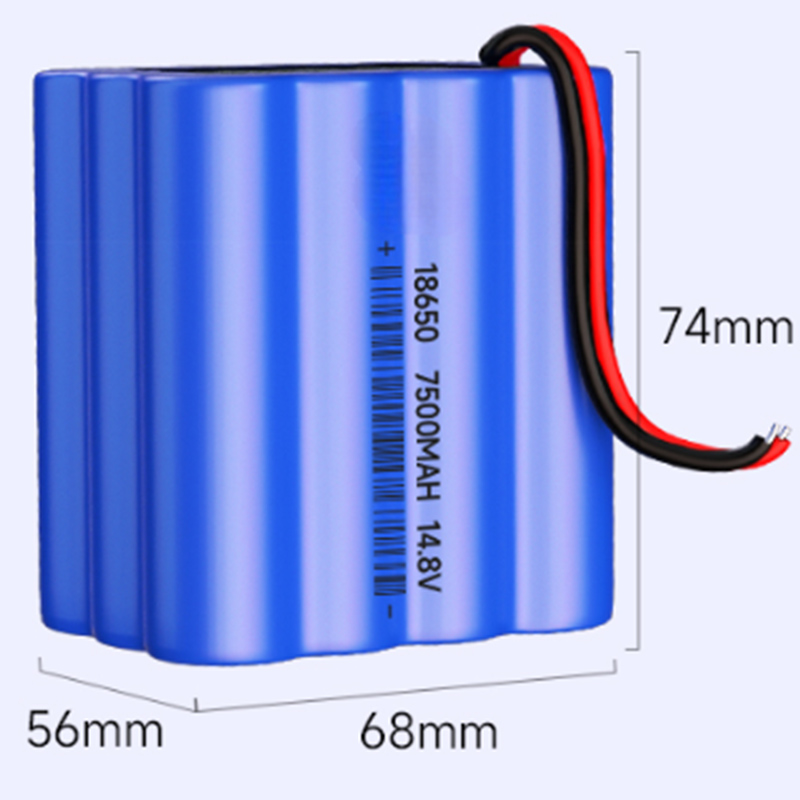How To Calculate The Voltage And Capacity Of Lithium Battery? How To Calculate How Many Series And How Many Parallel?
How To Calculate The Voltage And Capacity Of Lithium Battery? How To Calculate How Many Series And How Many Parallel?
First, lithium battery pack is composed of battery cells through series and parallel connection:
1, series connection (S): increase the voltage, the capacity remains unchanged.
For example: 1pc lithium ternary battery rated voltage is 3.6V, capacity is 2600mAH, 10pcs lithium ternary cells in series, the battery pack voltage: 3.6v × 10 = 36V, the capacity of the same 2600mAH, the final is 36V 2600mAH.
For example: 1pc lithium iron phosphate battery rated voltage is 3.2V, capacity is 4000mAH, 10pcs lithium iron phosphate cells in series, the battery pack voltage: 3.2v × 10 = 32V, capacity unchanged 4000mAH, the final is 32V 4000mAH.
2, parallel connection (P): increase capacity, voltage unchanged.
For example: 1pc ternary lithium battery rated voltage is 3.6V, capacity is 2600mAH, will be 10pcs ternary lithium battery cells in parallel, the battery pack capacity: 2600mAH × 10 = 26000mAH, the voltage remains unchanged at 3.6V, and the final is 3.6V 26000mAH.
For example: 1pc lithium iron phosphate battery rated voltage of 3.2V, capacity is 4000mAH, 10pcs lithium iron phosphate cells in parallel, the battery pack capacity: 4000mAH × 10 = 40,000mAH, the voltage remains unchanged 3.2V, the final is 3.2V 40,000mAH.
3, battery cells are connected in series and parallel at the same time, the same calculation method as above.
4, lithium battery pack power WH = battery pack rated voltage V × battery pack capacity AH.
For example: ternary battery pack 48V 15AH
Voltage: 3.7V×13S=48.1V≈48V
Capacity: 2500mAh×6P=15000mAh=15Ah
Electricity: 48v×15ah=720WH
Second, how to calculate the battery pack is composed by how many series connection?
ternary 48V, rated voltage is 3.6v for example: 48/3.6=13.3≈14 series connection
ternary 48V, rated voltage is 3.7v for example: 48/3.7=12.9≈13 series connection
Lithium iron 48V, rated voltage of 3.2V, for example: 48/3.2 = 15 series connection
That is to say, ternary 13, 14 series are on behalf of 48V, the charger should choose the right one; LiFePO4 15 series on behalf of 48V.
48V battery for example:
Example: Calculate with a ternary cell 3.7V:
13pcs cells in series (13 * 3.7V = 48.1V) Charging voltage: 13 * 4.2V = 54.6V
14pcs cells in series (14 * 3.7V = 51.8V) Charging voltage: 14 * 4.2V = 58.8V
Example: Calculated with one LiFePO4 3.2V:
15pcs cells in series (15 * 3.2V = 48.0V) Charging voltage: 15 * 3.65V = 54.75V
16pcs cells in series (16*3.2V=51.2V) Charging voltage: 16*3.65V=58.4V
Constant current charging to 4.2V (LiFe charging to 3.65V) with a multiplication rate of 0.5C at room temperature, and then switch to constant voltage charging.

 English
English
Which Is Better, Lithium Iron Phosphate or Lithium-Ion Battery?
As the demand for efficient and sustainable energy storage grows, the debate between Lithium Iron Phosphate (LiFePO4) batteries and traditional lithium-ion batteries has become a central topic in the energy industry. Both technologies power a wide range of modern devices-from electric vehicles to renewable energy systems-but they differ significantly in composition, performance, and application. Understanding these differences helps determine which battery type is better suited for specific needs.
Read MoreWhat Is a Prismatic LiFePO4 Cell
A Prismatic LiFePO4 cell is a type of lithium iron phosphate battery cell designed in a rectangular or box-like shape, known for its high energy density, stability, and long service life. Unlike cylindrical cells, which are rolled and enclosed in metal casings, prismatic cells use flat layers stacked inside an aluminum or steel shell. This structure allows for better space utilization and easier integration into larger battery packs.
Read MoreCustom 24V Lithium Battery Pricing
The price variation for custom 24V lithium batteries fundamentally stems from “base cost + functional cost + customization cost + compliance cost.”
Read More